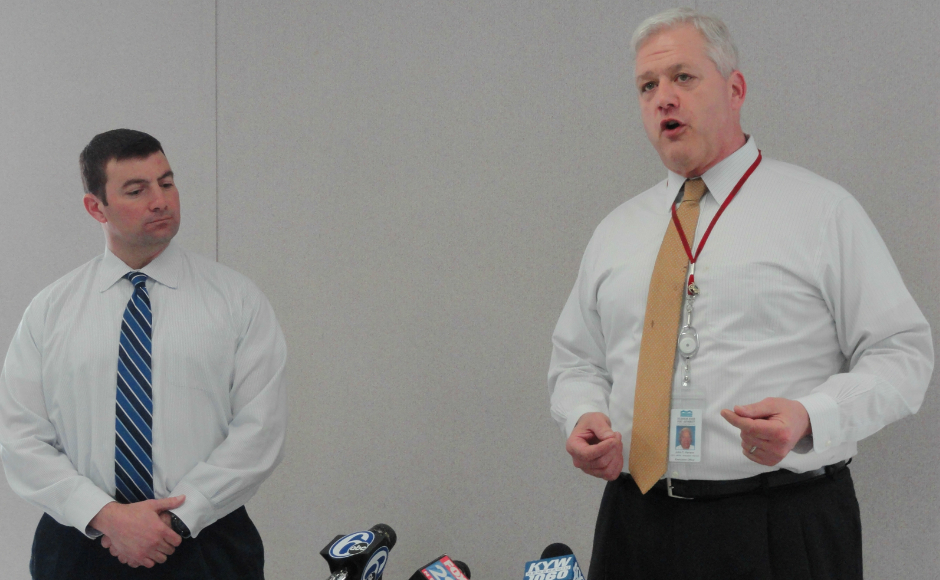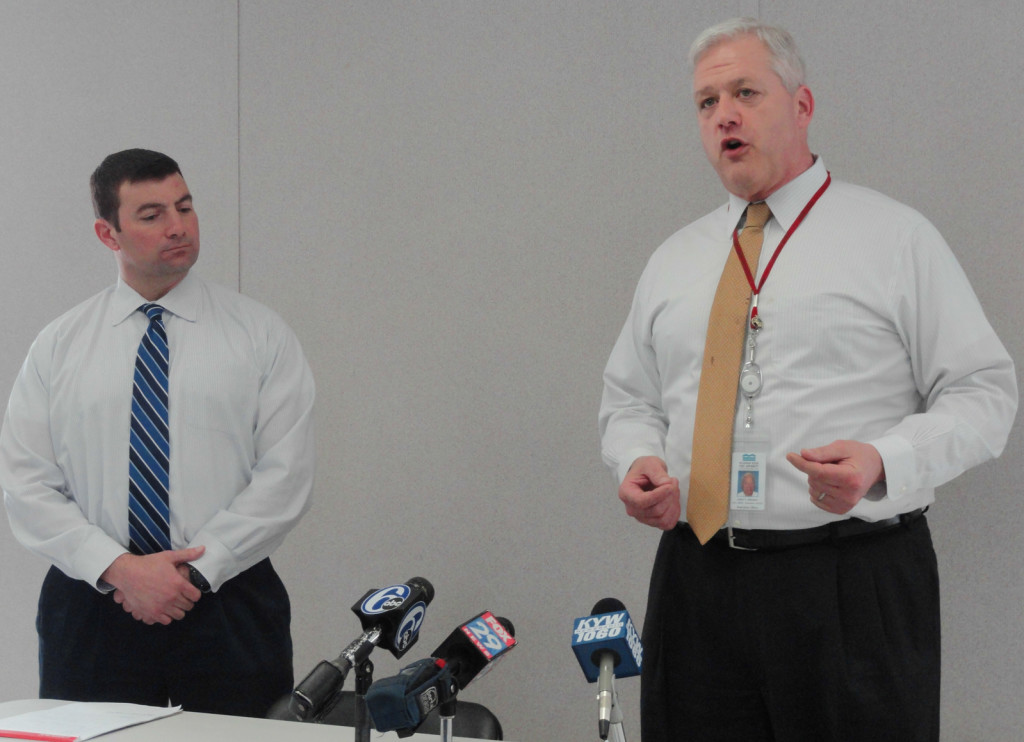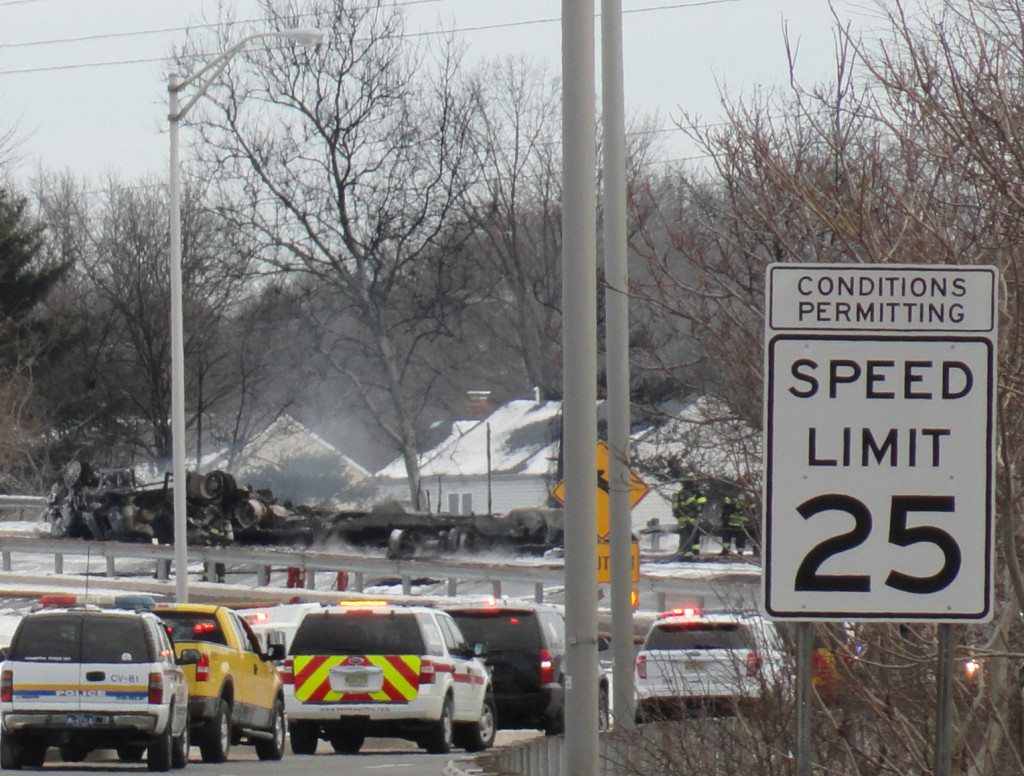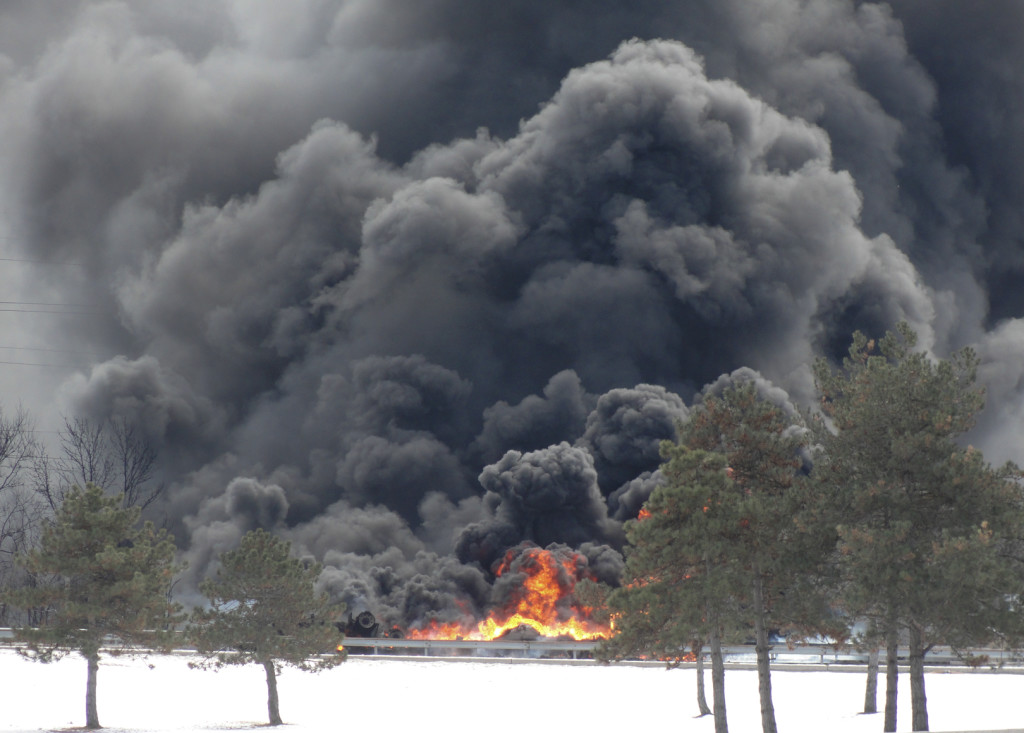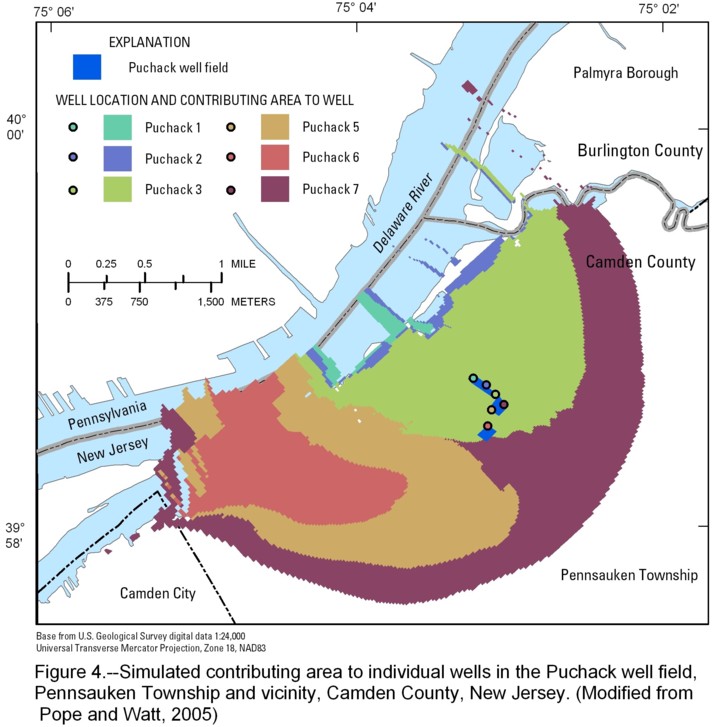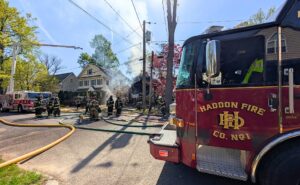The Route 90 East “D” ramp will be offline for at least a few days; remediation of the nearby Puchack waterway, which feeds into the Delaware River, could be affected for far longer.
By Matt Skoufalos
Cleanup at the site of a tractor-trailer accident that dumped some 8,000 gallons of burning gasoline on an exit ramp of the Betsy Ross Bridge will take at least a few days to complete, according to the Delaware River Port Authority (DRPA).
DRPA CEO John Hanson said that the agency has begun coordinating with contractors and equipment vendors to fix the 200 yards of roadway affected by the spill.
Contractors will put up jersey barrriers on the offramp–known as “Ramp D” to the DRPA–while the roadway shrinks to one lane to accommodate repairs.
Then the lanes will be milled and scarified to improve vehicle traction, and finally, the guardrail and light standards will be replaced.
In the meantime, Hanson said, the ramp from Route 90 East to Route 130 will be closed to traffic, with detours to Hilton Road.
“All three of those things have to happen before we can reopen the ramp,” he said.
“It’s not a complicated detour. I think the biggest issue will be for people who aren’t familiar with it who are following directions that someone gave them, or off of Mapquest.”
Hanson said that as the DRPA reviews the accident, it’s not inconceivable that the agency might elect to reconfigure the 25-mile-per-hour off-ramp as part of a larger project.
“We have a large capital budget, probably three-quarters of a billion dollars,” Hanson said.
“We’ll wait to see what comes out of this, but if it looks like it’s something that needs to be done, we’ll do it.”
DRPA Police Chief John Stief also confirmed that both the driver of the truck–operated by TK Transport of Pennsauken–and the firefighter injured in the incident had been released from Cooper Hospital after receiving treatment for their injuries.
Environmental impact
It will be a few days at least before Ramp D is able to be reopened to traffic, but environmental remediation after the accident will be on a much longer timeline.
EnviroTrac Environmental Services of Burlington has been contracted to complete remediation of the area, Hanson said.
“They’ve contained the material that went into the swale, the storm sewer, and that may have gotten into the [Puchack] creek,” he said.
According to New Jersey Department of Environmental Protection spokesperson Lawrence Hajna, “no additional free gasoline” had been observed at the site Tuesday morning, and temporary evacuations of nearby homes were rescinded Monday.
“Water in the drainage swale dried up and left residual gasoline,” Hajna said, but “no additional migration into Puchack Creek [was] observed.
“It appears that the majority of the gasoline burned up in the fire,” he said.
The DEP spokesman said that EnviroTrac will excavate soil in the drainage area and the slope of the ramp to delineate the extent of the contamination, adding, “they’ll have to remove several inches or more at the surface.”
Although underground wells at the Puchack waterway have been deeply contaminated from years of industrial pollution, Hajna said that the impact of yesterday’s traffic accident appears to have been limited to surface pollution.
“One home was checked for vapors; none were found,” he said. “[It] doesn’t look like there were any impacts.”
The shame of it, said Jeffrey Tittel, Executive Director of the New Jersey Sierra Club, is that despite the historic industrial pollution of the waterway, its water quality had “improved quite a bit over the last 25 to 30 years.
“A lot of the facilities in the area just dump into the stream,” Tittel said. “There’s actually some decent habitat there; some wetlands, too, even though it’s in an industrial area.
“These areas that have these historic polluted legacies, there’s some really high-quality habitat for fisheries and birds as well,” he said.
Although wildlife may be recovering from the effects of pollution, “we forget these waterways are used by a lot of people,” Tittel said.
Even if the bulk of the gasoline burned off in the fire after the crash, “there’s still some air pollution from the burnoff,” he said.
“Gasoline breaks down into other chemicals, and a lot of that stuff has environmental impact at one part per billion,” Tittel said. “One quart of oil pollutes 1 million gallons of water.”
Get more local news that matters. Check out NJ Pen on Facebook and Twitter.

